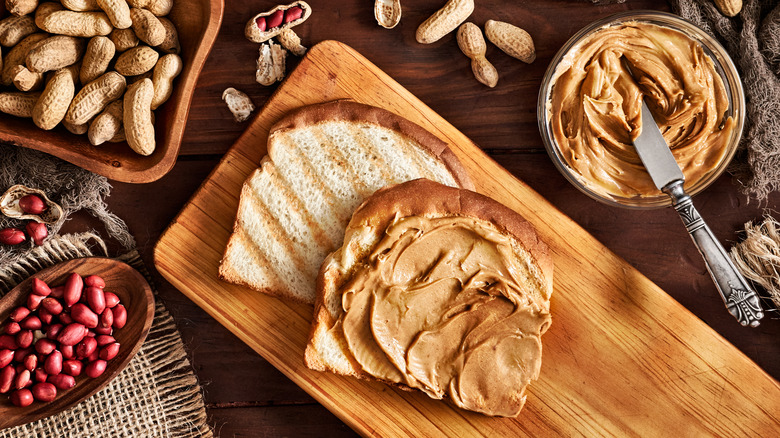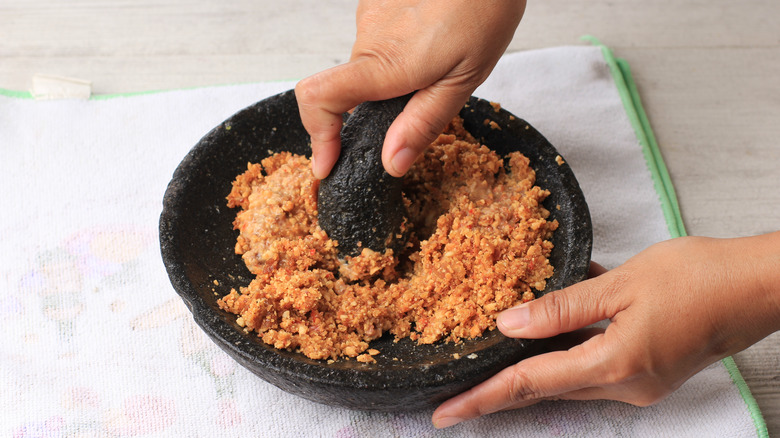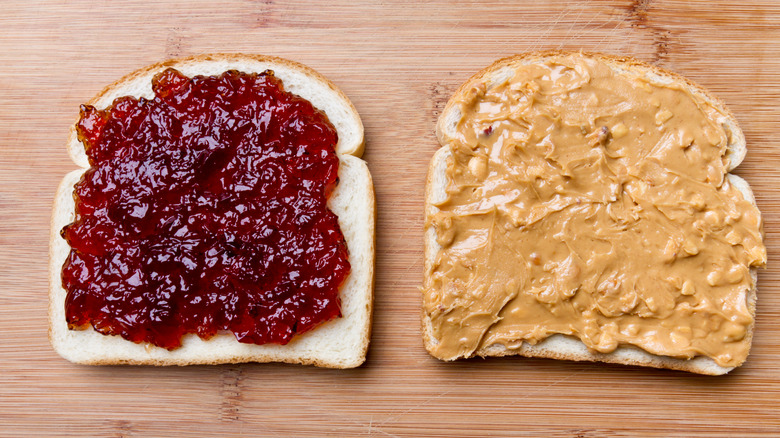Why A Mortar And Pestle Might Be The Best Tool For Homemade Peanut Butter
Peanut butter may be one of the most nostalgic flavors for Americans, as the country has recently broken records for consumption (reaching 4.4 pounds per capita in 2023 — which translates to an awful lot of peanut butter and jelly sandwiches). And as the market for peanut butter has grown, so too does the amount of options available to the average consumer. A walk down the peanut butter aisle these days can illicit as much confusion as hunger, with countless brands and varieties from the low fat to the flavored, different textures and certifications and claims.
One way to reduce that confusion and ensure you know what you're getting when you slather your bread with a spoonful? Make your own. Believe it or not, this pantry staple is one you can easily make at home. And perhaps contrary to popular belief, you don't even need a high powered gadget to do so. All you need are peanuts, a bit of oil, and a good old fashioned mortar and pestle. Add a little elbow grease, and pretty soon you have your own brand of peanut butter.
How to make it happen
The mortar and pestle is simply a bowl plus a hand-held grinder. It's been in the rotation of home cooks since ancient times, so even if it's unfamiliar equipment for you, you can rest assured that it has a history of reliability. This simple set is often used to grind spices and is known for its ability to produce restaurant-worthy pesto and guacamole.
To make your peanut butter using this contraption, simply add the peanuts to the bowl and grind by hand. The amount will depend on the size of your mortar and pestle, but you'll want enough space to be able to maneuver without the peanuts spilling out. The idea is to achieve an even blend, but you can decide how smooth or chunky you want your finished product to be (that'll determine how long this part will take). The motion you want to go for with a mortar and pestle isn't so much a pounding, but a grinding, using the handheld part to move the ingredients around in the bowl and scrape, press, and spin, allowing for the friction to do some of the work.
From there, you can combine your peanut paste with a bit of oil and salt. This can be done by hand which will give you a rustic butter, but is made a bit easier with a stand mixer, if you have one, which will help the emulsification process and result in a creamier, well-blended consistency.
Eating and adapting your homemade peanut butter
Given the simplicity of the process, you might be surprised how many options you have to customize your peanut butter. The mortar and pestle allows you to keep a close eye on the grind and consistency, but from there, you can also make a few other decisions. Even selecting your peanuts will make a difference, and you can choose from roasted and unsalted or dry roasted and salted. Choose a different type of oil for another dimension. Peanut oil seems like the natural go-to and will keep your peanut flavor pure, but you can also go for coconut and impart a bit of a tropical taste. Sea salt is classic, but you can get creative with infusions like habanero salt for a kick or rosemary salt for an herbaceous inflection.
Some recipes call for a bit of sugar, but if you want to sweeten things up, honey works well, too. From there, you can get really creative, adding spices like earthy cinnamon or cayenne and chili powder for a little kick. With this superior method, you will have your mortar and pestle turning out all kinds of homemade peanut butter with no risk of market confusion — based solely on your own inspiration.


